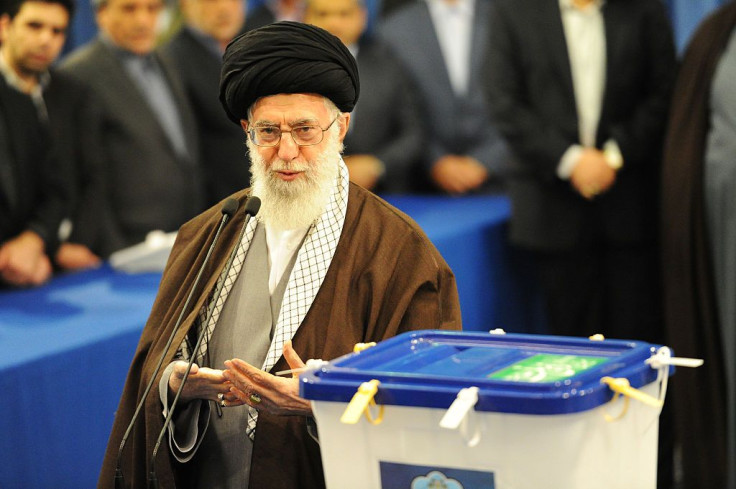Trump Slaps 'Hard-Hitting' Sanctions Against Iran

The Trump administration on Monday imposed what it said are “hard hitting” new sanctions on Iran, seeking to freeze assets of Iranian supreme leader Sayyid Ali Hosseini Khamenei, as well as “many others.”
President Donald Trump signed an executive order hitting Khamanei, whose personal worth is estimated at more than $100 billion, and his associates with additional financial sanctions. The sanctions block their access to any financial assets under U.S. jurisdiction.
Trump said Khamenei and his associates are ultimately responsible for what Trump brands as "the hostile conduct of the regime".
"Sanctions imposed through the executive order ... will deny the supreme leader and the supreme leader's office, and those closely affiliated with him and the office, access to key financial resources and support," said Trump.
The Department of the Treasury later announced sanctions against eight senior commanders of the Navy, Aerospace, and Ground Forces of the Islamic Revolutionary Guards Corps (IRGC), the elite military unit created to protect Iran’s Islamic republic. IRGC is distinct and separate from the Islamic Republic of Iran Army.
"These commanders sit atop a bureaucracy that supervises the IRGC's malicious regional activities, including its provocative ballistic missile program, harassment and sabotage of commercial vessels in international waters, and its destabilizing presence in Syria," said a Treasury statement.
Some analysts, however, said the sanctions against Khamenei make no sense since he has limited assets parked outside Iran. Much of Khamenei’s wealth remains within Iran and almost all of it springs from his control of “Setad,” or the Headquarters for Executing the Order of the Imam.
A six month-long investigation by Reuters in 2013 shows Khamenei mostly uses Setad to increase his grip on power. Reuters said it found no evidence “Khamenei is tapping Setad to enrich himself." It did note Khamenei uses Setad's funds to attain his political aims.
"Setad gives him the financial means to operate independently of parliament and the national budget, insulating him from Iran's messy factional infighting,” wrote Reuters.
Khamenei has been supreme ruler of Iran since June 4, 1989.
But the belated inclusion in the sanctions list of Iran’s chief negotiator and foreign minister, Mohammad Zarif, at Trump's insistence sends a signal Washington is no longer interested in a diplomatic solution to the Gulf crisis that almost took both countries to the brink of war on June 20.
Hagar Hajjar Chemali, former spokesperson for the U.S. mission to the UN, said Trump’s move against Zarif clearly delivers "a message that they're not interested in negotiating anytime soon, because they are in effect sanctioning Iran's chief negotiator.
“If Iran comes back to the table, the person who's going to be tasked with leading those negotiations is certainly Foreign Minister Zarif."
© Copyright IBTimes 2024. All rights reserved.




















